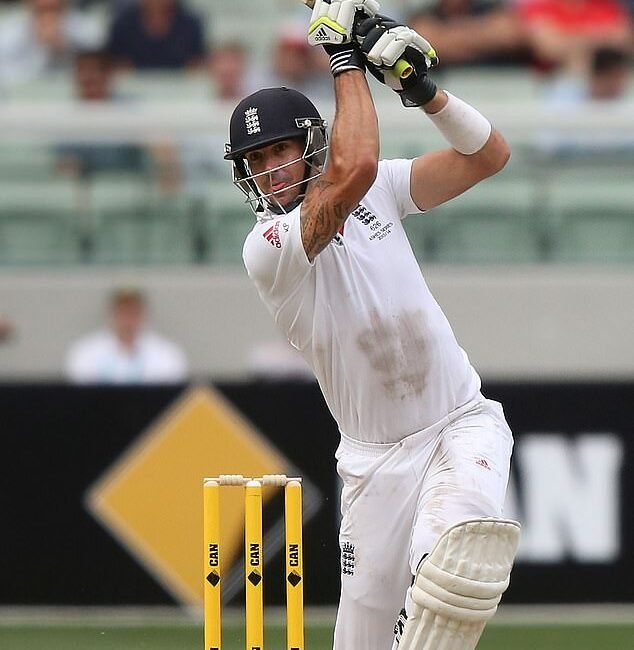The Art Of Batting by Jarrod Kimber (Bloomsbury Sport £20, 288pp)
Did you know that manure changed cricket? Before the late 19th century, muck spreading was done by hand, meaning little chunks of the stuff would lurk on the pitch.
If a ball hit one it would bounce unpredictably, thereby confusing the batsman. Once dung began to be liquefied and spread by machine, pitches became more reliable.
This is the detail in which cricket revels. Football is simple: you have to kick the ball into their net more times than they kick it into yours. Cricket is complex and so those who play the game often exhibit a certain kind of… let’s call it ‘intensity’. Jarrod Kimber’s book provides ample evidence of just how strange cricketers can be.
John Wright of New Zealand was so happy with one innings that he glued his gloves to the bat handle, so he could replicate his grip precisely the next time he played. Meanwhile India’s Ranji (Colonel H.H. Shri Sir Ranjitsinhji Vibhaji, Jam Sahib of Nawanagar to you) was so scared of the ball as a youngster that his coach tied his right leg to the ground.
Chance can play a part – Viv Richards developed his legendary love of hitting to the leg side because the off side of his school ground bordered land owned by someone who wouldn’t throw the ball back.
But you need to have natural talent in the first place. Experiments conducted indoors have shown that, unlike amateurs, professional batters can still hit the ball even when the lights are turned out.
Very few of the so-called ‘rules’ of batting seem to apply universally. The greatest of all time, Don Bradman, had eyesight rated as ‘poor’ when he was in the army. You’re always told to get your foot to the pitch of the ball, but Kevin Pietersen says he never bothered about that.
And Kimber himself admits that on first seeing Steve Smith, ‘I compared his chances of success to those of a dead donkey.’ The Aussie now appears in sixth place on the list of all-time greats that concludes the book.

Batter Up: Kevin Pietersen still holds the record for being the fastest player to cross 2,000 runs in One Day International cricket when he played for England
David ‘Bumble’ Lloyd, as he discussed facing fast bowling, said: ‘The thrill of the game is I know I can get hurt.’ In 1953 New Zealand’s Bert Sutcliffe was hit by a bouncer and had to visit hospital.
On his return he carried on batting, and ‘went through so many bandages that they had to try towels to stop the bleeding’.
Mark Butcher remembers England’s 1998 tour of the West Indies – local fans would line the road making cut-throat signals. His team-mate Alec Stewart ‘played forward to a ball that almost displaced his nipple’.
You’ll need to be a confirmed cricket fan to enjoy (or even understand) this book. You can’t make the arguments Kimber is looking to make without using statistics, but it does lead to a prose style that’s more clubbing Matthew Hayden than elegant David Gower.
That said, a good statistic is always a winner. I love the fact that the record for highest percentage of a side’s runs in a completed Test innings happened in the first innings ever, in 1877, when Charles Bannerman scored 165 of Australia’s 245 runs.




No Comment! Be the first one.